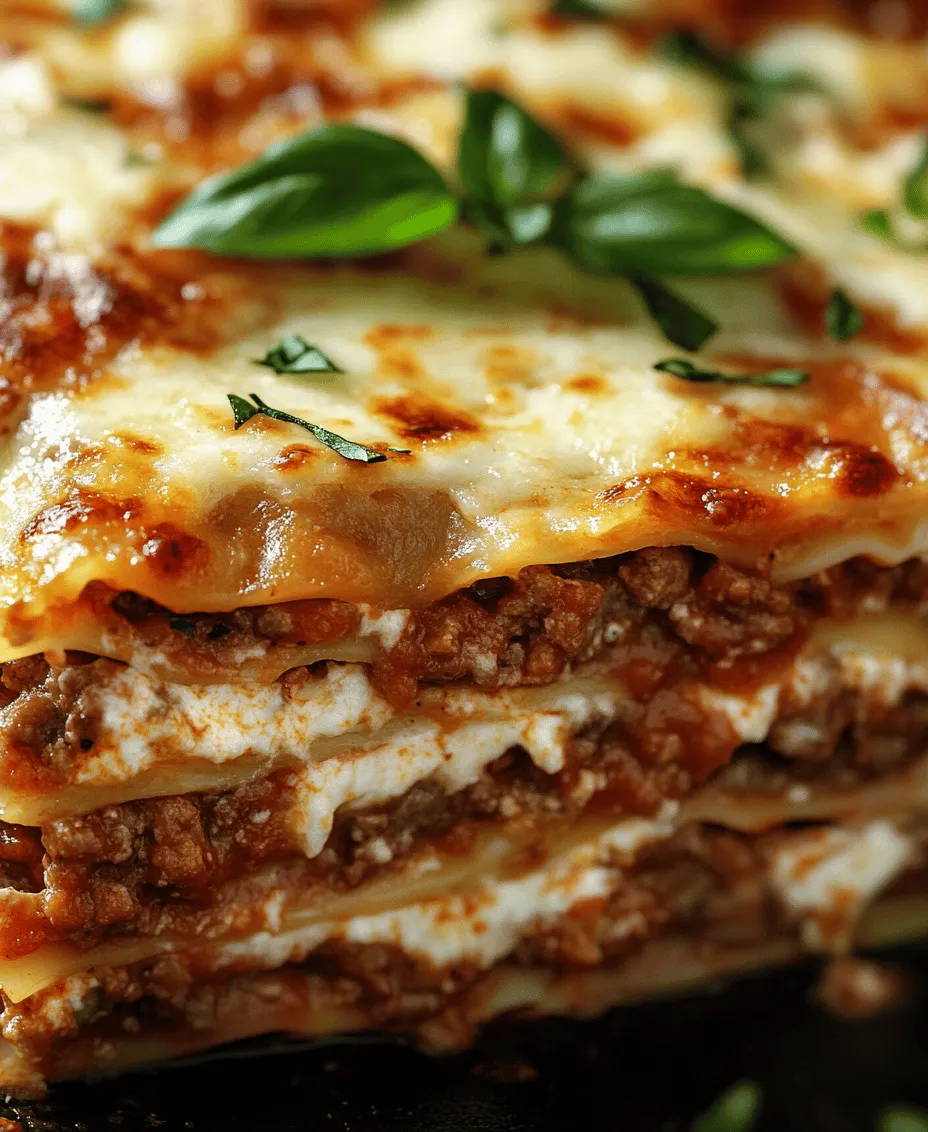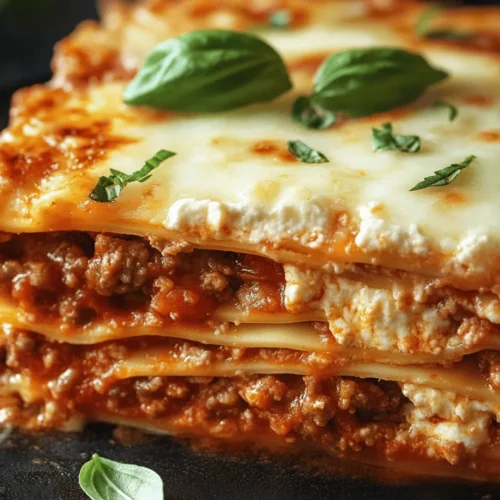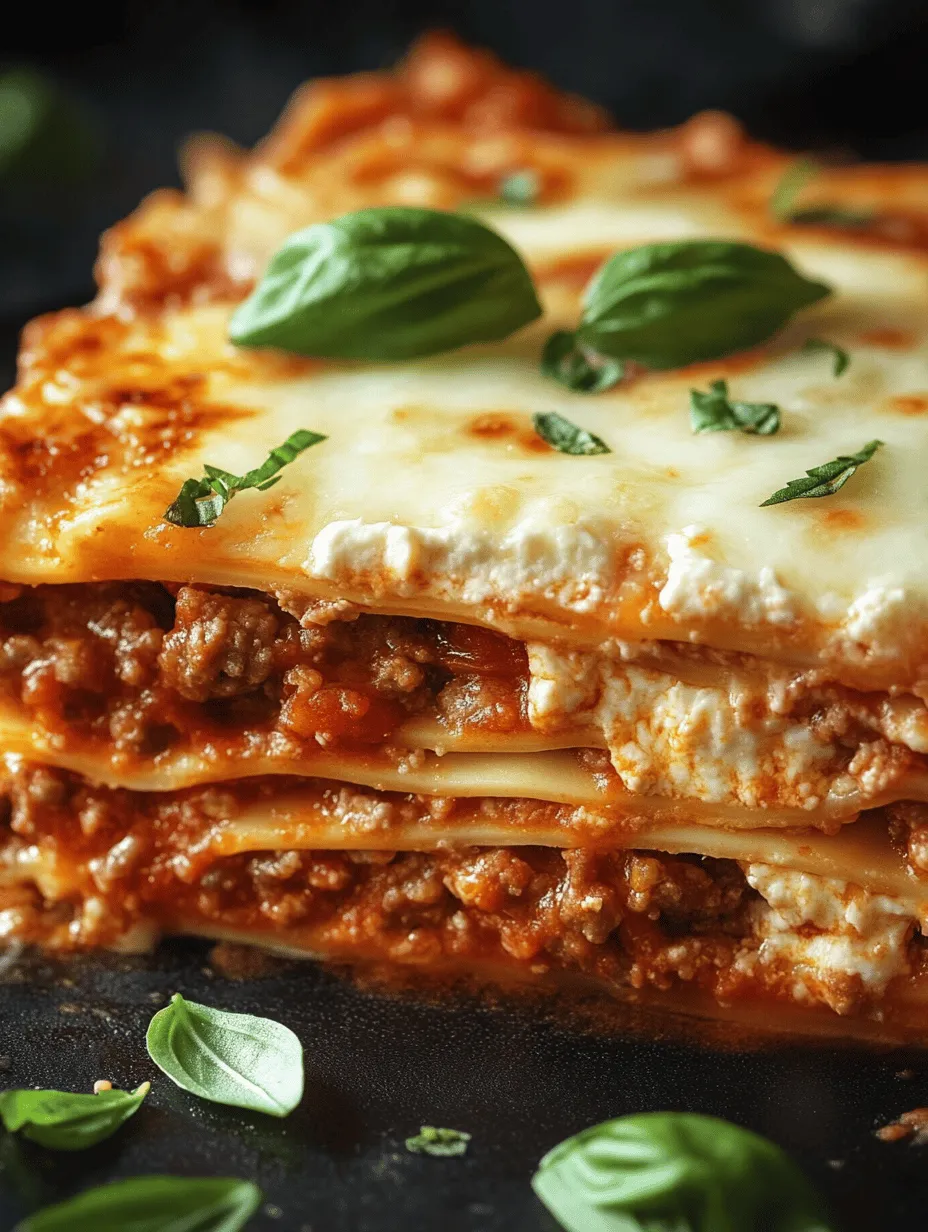Lasagna has long been cherished as one of the ultimate comfort foods, embodying warmth, heartiness, and a touch of nostalgia in every bite. This classic Italian dish, made famous for its layered goodness of pasta, cheese, and meat or vegetables, holds a special place in the hearts (and stomachs) of many. Now, imagine taking this beloved dish and transforming it into a visually stunning creation that tantalizes both the taste buds and the eyes: the lasagna cake.
The concept of a lasagna cake takes the traditional elements of lasagna and elevates them into an artistic culinary experience. Not only does it maintain the rich flavors and comforting textures of the classic dish, but it also introduces an engaging and playful aspect to cooking, reminiscent of the joy of coloring books. Just as a coloring book invites creativity with every stroke of color, this lasagna cake encourages you to experiment with layers, colors, and even flavors, making it an exciting project for both seasoned chefs and novice cooks alike.
In a world increasingly driven by convenience, the importance of homemade meals cannot be overstated. There’s something truly satisfying about crafting a dish from scratch, knowing exactly what goes into it, and filling your home with the delightful aromas of fresh ingredients. The lasagna cake embodies this ethos, allowing you to create a meal that not only nourishes the body but also delights the soul.
Understanding Lasagna: A Culinary Classic
To appreciate the lasagna cake fully, it’s essential to understand the roots of its predecessor, the traditional lasagna. The history of lasagna can be traced back to ancient civilizations, with its origins often debated among culinary historians. While some believe it emerged in Ancient Greece, where layers of pasta were baked with meat and sauce, others argue that its true roots lie in Italy during the Middle Ages.
Traditional lasagna is typically prepared using flat, wide pasta sheets layered with a rich filling. The classic combination usually involves a hearty meat sauce made with ground beef or pork, creamy ricotta cheese mixed with egg and herbs, and a generous helping of mozzarella and Parmesan cheese that melts beautifully during baking. Each layer is carefully constructed to create a harmonious balance of flavors and textures, making it a dish that is as much about the experience of eating as it is about the taste.
Around the world, variations of lasagna thrive, showcasing local ingredients and culinary traditions. From the vegetarian lasagna, packed with seasonal vegetables and a béchamel sauce, to the spicy Mexican lasagna that incorporates tortillas and salsa, this dish has evolved into countless forms. The rise of creative interpretations, such as the lasagna cake, demonstrates the versatility of this classic dish while inviting cooks to explore new horizons in flavor and presentation.
Ingredients Breakdown
Creating a lasagna cake requires a thoughtful selection of ingredients that harmonize to deliver the quintessential flavors of traditional lasagna while also catering to the artistic expression of the dish. Here’s a detailed breakdown of each ingredient used in the recipe:
Lasagna Noodles
The foundation of any lasagna is the noodles. When it comes to lasagna, you have options: traditional dried lasagna noodles, fresh pasta sheets, or even no-boil noodles. Dried lasagna noodles are the most common choice, and they require boiling before assembly. If you opt for fresh pasta, you can skip the boiling process entirely, making it a quicker option. No-boil noodles are convenient as they absorb moisture from the sauce during baking, eliminating the need for pre-cooking. Regardless of the type you choose, ensure they are cooked according to the package instructions to prevent sticking and ensure even layering.
Ricotta Cheese
Ricotta cheese plays a crucial role in achieving the creamy texture that is characteristic of lasagna. It is often mixed with eggs, herbs, and spices to create a flavorful filling that adds richness to each layer. The velvety consistency of ricotta complements the other cheeses and ingredients beautifully, creating a well-balanced taste. If you’re looking for a lighter option, consider substituting part of the ricotta with cottage cheese or Greek yogurt for a protein boost.
Mozzarella Cheese
Mozzarella cheese is the star when it comes to melting. Its gooey, stretchy texture when heated makes it an indispensable part of any lasagna. For the best results, opt for whole milk mozzarella, which provides maximum creaminess. If you’re looking to reduce fat content, part-skim mozzarella is a suitable alternative. Additionally, shredded mozzarella is convenient for layering, while fresh mozzarella can be sliced and arranged for a more gourmet presentation.
Parmesan Cheese
Parmesan cheese is often used in lasagna for its strong, nutty flavor, enhancing the umami notes of the dish. Sprinkling grated Parmesan between layers and on top before baking adds a delightful crust that contrasts with the creaminess of the other cheeses. For a more intense flavor, consider using aged Parmesan or Parmigiano-Reggiano.
Marinara Sauce
Marinara sauce is the lifeblood of any lasagna. You can either choose a homemade version, which allows you to control flavors and ingredients, or select a high-quality store-bought sauce for convenience. A well-seasoned marinara with a balance of acidity and sweetness complements the richness of the cheeses and meats perfectly. If you prefer a spicier kick, feel free to add crushed red pepper or Italian seasoning to your sauce.
Ground Beef vs. Italian Sausage
The protein component of lasagna often comes from ground beef or Italian sausage. Each option brings its own unique flavor profile; ground beef is milder, while Italian sausage offers a spicier, herbaceous taste. When preparing your meat sauce, consider browning the meat with onions and garlic for added depth. For a lighter option, turkey or chicken can be substituted, or you can opt for a plant-based alternative for a vegetarian lasagna.
Seasonings
Herbs and spices are vital in Italian cuisine, and they elevate the flavor of your lasagna significantly. Fresh basil, oregano, thyme, and parsley are commonly used, and they can be mixed into the ricotta or sprinkled between layers for added taste. Don’t shy away from experimenting with seasonings to create a personalized flavor profile that suits your palate.
Optional Ingredient Substitutions
Catering to dietary restrictions is essential in today’s diverse culinary landscape. For gluten-free alternatives, consider using gluten-free pasta or vegetables like zucchini or eggplant as layers. Dairy-free options can be achieved by using plant-based cheeses and nut milks in place of traditional dairy products. Knowing how to adapt your ingredients ensures that everyone can enjoy your lasagna cake, regardless of their dietary needs.
Step-by-Step Cooking Instructions
Boiling the Noodles
The first step in creating your lasagna cake is boiling the noodles. Fill a large pot with water, add a generous pinch of salt, and bring it to a rolling boil. Once boiling, add the lasagna noodles and cook them according to the package instructions, typically around 8-10 minutes, until they are al dente. Be sure to stir occasionally to prevent the noodles from sticking together.
Once the noodles are cooked, drain them in a colander and rinse them briefly under cold water to stop the cooking process and cool them down. Lay the noodles flat on a clean kitchen towel or parchment paper, ensuring they do not overlap. This step is crucial as it prevents sticking and makes assembly easier.
Preparing the Meat Sauce
While the noodles are boiling, you can prepare the meat sauce. Start by heating a large skillet over medium heat. Add a tablespoon of olive oil and let it warm up before adding your choice of ground beef or Italian sausage. Use a wooden spoon to break up the meat as it cooks, ensuring it is browned evenly.
Once the meat is browned, drain any excess fat, then add diced onions and minced garlic to the skillet. Sauté the mixture until the onions become translucent and fragrant. Next, pour in your marinara sauce, stirring to combine. Allow the sauce to simmer for about 10-15 minutes, letting the flavors meld together. Season with salt, pepper, and your choice of herbs to taste.
This step not only creates a delicious sauce but also fills your kitchen with the irresistible aroma of Italian cooking, setting the stage for the layers of flavor that will follow in your lasagna cake.
—
As you gather your ingredients and start the cooking process, you’ll realize that creating this lasagna cake is not just about following a recipe—it’s an opportunity to engage your creativity in the kitchen. In the following sections, we will delve deeper into the assembly of the lasagna cake and share tips for achieving the perfect result. So, roll up your sleeves and get ready for a culinary adventure that combines tradition with innovation!

Tips for Achieving Perfect Browning of Meat
When preparing the meat for your lasagna cake, achieving the perfect browning is crucial for flavor development. Here are some essential tips:
1. Use the Right Pan: Opt for a heavy-bottom skillet or a cast-iron pan. These materials retain heat effectively, allowing for better browning.
2. Don’t Crowd the Pan: When browning meat, ensure that the pieces are not too close together. Crowding can cause the meat to steam instead of sear. If you’re preparing a large batch, brown the meat in batches.
3. Pat Dry: Before placing the meat in the pan, pat it dry with paper towels. Excess moisture can hinder browning, so aim for a dry surface for the best results.
4. High Heat: Start with high heat to create a nice sear. Once browned, you can reduce the heat to finish cooking the meat evenly.
5. Season Generously: Season the meat before browning. This not only enhances the flavor but also aids in the browning process, thanks to the Maillard reaction.
Discuss Simmering Techniques for Flavor Development
Once your meat is browned, it’s time to build depth in flavor through simmering. Here’s how to do it effectively:
1. Deglaze the Pan: After browning, deglaze the pan with a splash of wine or broth. This step lifts the flavorful browned bits from the bottom, adding richness to your sauce.
2. Add Aromatics: Onions, garlic, and herbs should be added after deglazing. Sauté them until fragrant before adding the rest of your ingredients. This step infuses the meat with additional flavor.
3. Slow and Steady: Allow the meat to simmer gently. Bringing it to a boil before lowering the heat allows flavors to meld and develop. Aim for a simmer, where small bubbles break the surface slowly.
4. Time is Key: Simmer the sauce for at least 30 minutes to an hour, allowing the flavors to deepen. The longer it simmers, the better the flavor, so don’t rush this step.
Mixing the Cheeses
The cheese mixture is a cornerstone of lasagna cake, creating a creamy, rich texture that complements the sauce and meat.
1. Choosing Your Cheeses: A combination of ricotta, mozzarella, and parmesan works wonders. The ricotta adds creaminess, mozzarella brings stretchiness, and parmesan offers a sharp, nutty flavor.
2. Achieving the Right Consistency: To create a smooth cheese mixture, ensure your ricotta is well-mixed and free of lumps. Use a fork or a hand mixer to blend the ingredients until creamy.
3. Add Flavorings: Incorporate egg, salt, pepper, and fresh herbs like basil or parsley into the mixture. The egg acts as a binder, ensuring that the cheese layers hold together during baking.
4. Taste As You Go: Always taste the cheese mixture before layering. Adjust seasoning as needed, ensuring that it complements the meat sauce and pasta.
Assembling the Layers
The assembly of your lasagna cake is where the magic happens. Follow these strategies for even layering:
1. Start with Sauce: Begin by spreading a thin layer of meat sauce at the bottom of your baking dish. This prevents the noodles from sticking and keeps the bottom moist.
2. Even Distribution: Use a spatula to spread the cheese mixture evenly over the noodles. Layering evenly ensures that every slice has a balanced flavor of meat, cheese, and noodles.
3. Balance is Key: Introduce a harmonious balance between meat sauce, cheese mixture, and noodles. Each layer should be distinct yet cohesive. Typically, three layers of noodles with two cheese layers and three meat sauce layers work well.
4. Finish with Cheese: Top your final layer with a generous amount of mozzarella and parmesan cheese. This will create a beautifully browned, bubbly crust during baking.
Baking the Cake
Baking the lasagna cake is the final step to achieving that perfect texture.
1. Optimal Temperature: Preheat your oven to 375°F (190°C). This temperature allows the lasagna to cook through without burning the top.
2. Baking Time: Bake for approximately 45-60 minutes. The cheese should be melted and bubbly, with a golden-brown crust on top.
3. Check for Doneness: To ensure your lasagna cake is done, insert a knife or toothpick in the center. It should come out hot and the cheese should be fully melted. Let it rest for 15-20 minutes before slicing to allow the layers to set.
Visual Appeal: The Lasagna Cake Experience
A lasagna cake isn’t just about taste; its visual appeal is equally important.
1. Layering and Color: The vibrant layers of rich red sauce, creamy white cheese, and golden-brown cheese topping create a feast for the eyes. Each slice reveals the colorful layers, making it an impressive dish for gatherings.
2. Coloring Book Theme: The concept of a ‘coloring book’ lasagna cake encourages creativity. Customize your layers by adding vegetables like spinach, zucchini, or bell peppers, which not only enhance flavors but also add visual interest.
3. Plating Suggestions: Serve individual portions on colorful plates to highlight the lasagna’s colorful layers. Garnish with fresh herbs or a sprinkle of parmesan for added elegance.
Nutritional Value of Lasagna Cake
Understanding the nutritional value of your lasagna cake is essential for health-conscious cooks.
1. Nutritional Breakdown: A typical serving of lasagna cake provides approximately 400-500 calories, depending on the cheese and meat used. It offers a good balance of protein, carbohydrates, and fats.
2. Health Benefits: Homemade lasagna is packed with nutrients from ingredients like lean meats, tomatoes, and cheese. It’s a source of protein and calcium while allowing you to control the quality of ingredients.
3. Comparison to Store-Bought Options: Store-bought lasagna often contains preservatives and artificial flavors. By making your own, you can ensure fresh, wholesome ingredients, making it a healthier choice.
Serving Suggestions and Pairings
To elevate your lasagna cake experience, consider these serving suggestions:
1. Ideal Accompaniments: Pair your lasagna with a crisp green salad drizzled with vinaigrette to cut through the richness. Garlic bread or a side of roasted vegetables complements the dish perfectly.
2. Wine Pairing: A robust red wine, such as Chianti or Merlot, pairs beautifully with the flavors of lasagna. The acidity in red wine balances the richness of the cheese and meat.
3. Creative Serving Ideas: For festive occasions, serve individual portions in ramekins or small cast-iron skillets. This adds a rustic touch and makes for easy serving during gatherings.
Conclusion
Creating and sharing a lasagna cake is a joyous experience that blends cooking and creativity. Each layer tells a story, from the rich meat sauce to the creamy cheese, culminating in a dish that delights both the palate and the eyes. As you slice into this culinary masterpiece, you not only enjoy a hearty meal but also the satisfaction of crafting something beautiful and delicious.
Embrace the joy of cooking and let your creativity flourish in the kitchen. Explore more recipes and culinary adventures that bring your family and friends together, celebrating the art of homemade meals. Whether you’re hosting a gathering or enjoying a quiet family dinner, your lasagna cake will surely be the star of the table.


